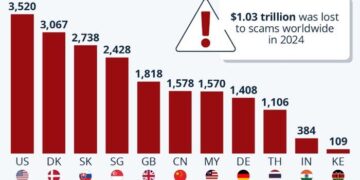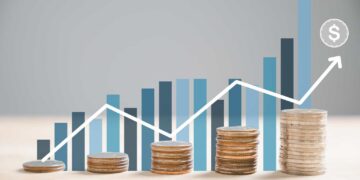Jonathan Kitchen
By OpenMarkets
At a Glance
- Higher levels of inflation and growth tend to drive up commodity prices
- Open interest in the CME Group BCOM product suite was up more than 33% in 2024
If investors were to look at commodity index returns for 2024, they might be forgiven to think it was a placid year, as the Bloomberg Commodity Index’s (BCOM) return was roughly flat.
BCOM’s return of 0.65% seemingly overshadows what was a volatile year for certain commodity sectors – deflation and surpluses weighed on grains and energy markets, extreme weather hit production in key soft-commodities-producing countries such as Brazil, and gold and silver saw sharp gains as demand picked up.
However, this is all by design. The BCOM index is comprised of 24 commodity futures contracts, and it is weighted one-third by world production of each commodity and two-thirds by the underlying liquidity of each of the commodities futures markets. Weights are further adjusted to cap commodity and sector exposures, with each individual commodity restricted to a max weight of 15% and each sector capped at 33%. This enhances diversification and limits the impact of significant price swings by any one commodity.
The broad nature of the commodity index has a similar volatility profile as a broad equities benchmark, says Jim Wiederhold, commodity indices product manager at Bloomberg.
2024’s Highs and Lows
The index hit its 2024 high in May, rising to its highest level since April 2023, led by crude oil and metals. Crude oil prices rose in the spring, buoyed by strong demand and concerns about supply disruptions in the Middle East, while gold and silver gained from risk-adverse buyers. At the time, inflation ticked up as well, leading to worries that prices were ready to rise again.
After posting that high, BCOM declined into the fall, but reversed some of the drop when China, the world’s largest commodities consumer, announced a significant stimulus program to prop up its flagging economy.
However, since the initial announcement, commodities pulled back as China didn’t announce additional measures. Despite the two bounces in 2024, the BCOM index is down sharply from 2022’s highs brought on at the onset of the Russia-Ukraine conflict and the inflation-induced rally.
Wiederhold says 2024’s big theme was deflation, as price gains began to slow following a series of Federal Reserve rate hikes in 2022 and 2023. Big grain surpluses with bumper corn and soybean crops in the Midwest weighed on prices, making the grain sector the worst-performing sector, down 16%. Crude oil also saw a surplus in 2024, with U.S. production leading the way.
Soft commodities were the best performers for 2024, he says, up 32%, as extreme weather in coffee-producing countries such as Brazil and Vietnam drove most of the performance. Gold and silver were also strong, with gold prices hitting all-time nominal highs and silver reaching 10-year highs.
Uses of Commodity Indexes
Commodities markets draw wide investor interest, Wiederhold says.
Amid this backdrop, BCOM futures contracts at CME Group saw a surge in volume and open interest in 2024, up more than 35% and 123% year-over-year, respectively. As more market participants looked for opportunities to manage risk and express views on commodity market movements, the exchange also began offering options on BCOM futures in September of last year.

Energy in Focus
The makeup of the BCOM index changes every January, and the index committee usually announces the target weights for the coming year in October. Each month, the index rebalances to reflect changes in futures contracts months and the futures roll ahead of expiration.
For 2025, Brent crude oil will be the highest weighted energy component of BCOM, at 8.03%, surpassing natural gas, which was the biggest part of 2024’s index. Overall, energy has the highest weight of any sector, at 30.01%.
Grains are the second-largest group in BCOM, at 23.2%, and precious metals, which include gold and silver, come in third at 18.8% of BCOM.
Source: Bloomberg
Watch Inflation, Growth for 2025
Wiederhold says commodities could be at an inflection point in 2025, and investors should keep a close eye on both inflation and growth, two factors that can drive higher commodity prices. Commodities tend to perform well during rising inflation or rising growth, he says.
Inflation could increase if U.S. fiscal policy under the new administration stimulates demand and the Federal Reserve stays on a monetary-easing path. Although inflation fell gradually in 2024, under the surface of the headline numbers were some simmering concerns about higher prices. If those concerns become more pronounced, prices could rise swiftly, he adds.
Broad commodities indexes tend to perform very well when there’s unexpected inflation, Wiederhold says, as seen in 2022 when the commodities index rose 16% and stocks and bonds fell that year.
While deflation was a theme to watch in commodities in 2024, inflation could be the story in 2025.
Original Post
Editor’s Note: The summary bullets for this article were chosen by Seeking Alpha editors.
Read the full article here








